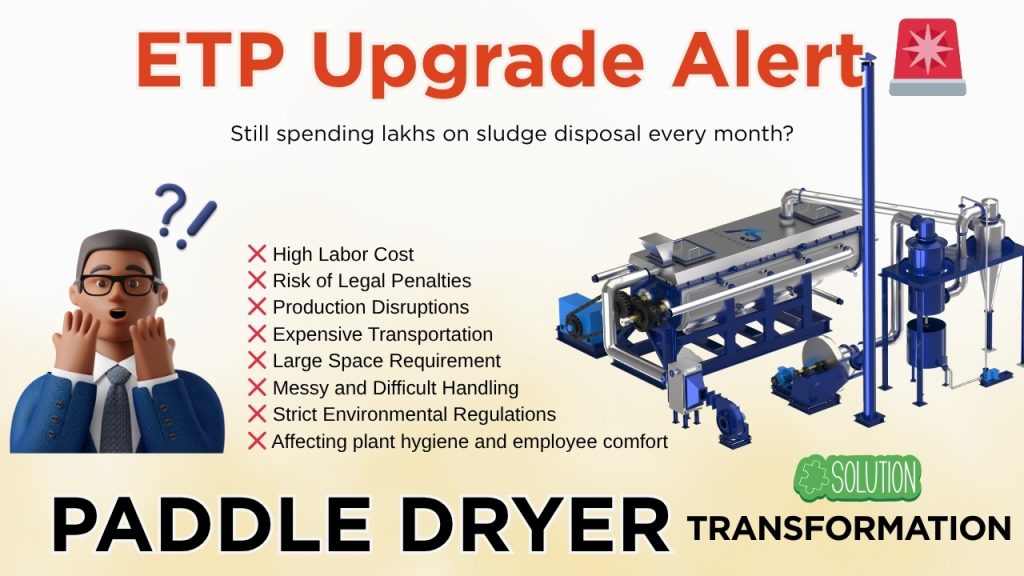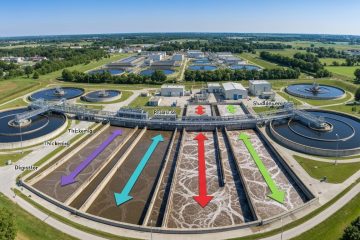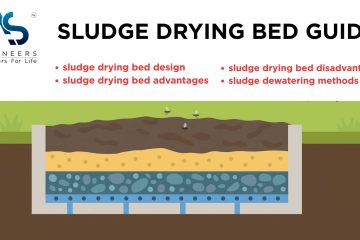Have you ever wondered what happens to water after it goes down the drain? All the water from our homes, businesses, and industries becomes wastewater, and it can’t be returned to the environment without being cleaned. This is where wastewater treatment comes in. It’s a critical process for effective water management, ensuring we have access to clean water and protecting our natural ecosystems. This journey transforms used, contaminated water back into a state that is safe for the environment.
Table of contents
- Key Highlights
- Overview of Wastewater and Its Sources
- Unit Processes in Wastewater Treatment (Phase Separation, Sedimentation, Oxidation, Anaerobic Treatment)
- Types of Wastewater Treatment Plants (Sewage, Industrial, Agricultural, Leachate)
- Key Stages of the Wastewater Treatment Process
- Secondary Treatment: Biological Processes Explained
- Advanced and Tertiary Wastewater Treatment Technologies
- Polishing Processes in Wastewater Treatment
- Sludge Management and Final Disposal in Wastewater Treatment
- Frequently Asked Questions
- Conclusion
Key Highlights
- The wastewater treatment process is a multi-stage system designed to remove contaminants from used water.
- Primary treatment focuses on physically removing solids through sedimentation.
- Secondary treatment uses biological processes to break down organic matter.
- Tertiary treatment involves advanced methods to disinfect and polish the water for safe release.
- Effective sludge management is a crucial part of the process, often involving treatment for reuse.
- The ultimate goal is to protect public health and improve water quality before returning water to the environment.
Overview of Wastewater and Its Sources
Wastewater is essentially any water that has been affected by human use. It comes from residential, commercial, and industrial sources, carrying everything from human waste and food scraps to chemicals and detergents. This sewage water is collected and transported to a treatment facility.
If left untreated, this water would flow directly into our rivers, lakes, and oceans. The organic material and harmful substances within it can pollute water bodies, posing a significant risk to both environmental and public health. That’s why treating it is not just an option, but a necessity. Now, let’s explore what wastewater consists of in more detail.
Defining Wastewater in the Indian Context
In any context, including India’s urban and rural landscapes, wastewater is a mix of water and waste particles from drains, sinks, and toilets. This sewage contains a wide range of materials, including food waste, chemicals from cleaning products, and other particles that are either dissolved or suspended in the water. Effective water management requires robust water systems to collect and handle this waste water.
The main stages involved in the wastewater treatment process are designed to tackle these contaminants sequentially. The journey typically begins with preliminary and primary treatment to remove solids, followed by secondary treatment to break down organic matter biologically. The final steps often include tertiary treatment for disinfection and polishing.
Through these processes, solids are separated and filtered out, forming a substance called sludge, which requires its own treatment. The goal is to transform the incoming wastewater into a clean effluent that can be safely discharged.
Types of Wastewater Generated in Urban and Rural Areas
Wastewater can be broadly categorized based on its source. The most common type is municipal wastewater, also known as sewage water, which comes from households and businesses in cities and towns. It’s a complex mixture of water, organic matter, and solid waste.
Industrial wastewater, on the other hand, is generated by manufacturing processes. Its contents are specific to the industry, often containing chemicals, heavy metals, or other compounds that require specialized treatment. The treatment for industrial wastewater can differ significantly from that for municipal sewage.
While “wastewater treatment” is a broad term, “sewage treatment” specifically refers to treating municipal wastewater. The differences lie in the contaminants present. Sewage treatment focuses on organic matter and pathogens, whereas industrial wastewater treatment must address specific chemical pollutants. Key sources of wastewater include:
- Households (sinks, toilets, showers)
- Businesses and commercial establishments
- Industrial facilities (refineries, manufacturing plants)
- Agricultural operations
Unit Processes in Wastewater Treatment (Phase Separation, Sedimentation, Oxidation, Anaerobic Treatment)
The removal of contaminants in wastewater treatment relies on several core unit processes. A fundamental technique is phase separation, where impurities are transferred into a non-aqueous phase. This is often achieved through sedimentation, a process where gravity does the heavy lifting. In a sedimentation tank, heavier solids settle to the bottom, allowing them to be separated from the liquid.
Other key processes are biological and chemical. Oxidation, for instance, helps reduce the biochemical oxygen demand of wastewater by converting organic compounds into simpler substances like carbon dioxide and water. In some cases, anaerobic digestion is used, where microorganisms break down biodegradable material in the absence of oxygen. Each of these processes plays a vital role in cleaning the water before it’s returned to the water cycle.
Types of Wastewater Treatment Plants (Sewage, Industrial, Agricultural, Leachate)
Not all wastewater is the same, so there are different types of treatment plants designed to handle specific kinds of waste. The most common is the sewage treatment plant, which processes municipal wastewater from homes and businesses. Other facilities are built to handle more specialized waste streams.
Industrial wastewater treatment plants, for example, tackle pollutants from manufacturing, while agricultural wastewater facilities manage runoff and animal waste. Leachate treatment plants are designed to handle the liquid that drains from landfills. Each treatment plant uses specific technologies to produce treated water that meets safety standards.
| Type of Plant | Source of Wastewater | Key Contaminants |
|---|---|---|
| Sewage Treatment Plant | Households and businesses | Organic matter, pathogens, nutrients |
| Industrial Wastewater Treatment | Manufacturing processes, refineries | Chemicals, heavy metals, toxic compounds |
| Agricultural Wastewater Treatment | Farms, animal operations | Nutrients, pesticides, animal slurry |
| Leachate Treatment Plant | Landfills | High concentrations of various pollutants |
Key Stages of the Wastewater Treatment Process
The wastewater treatment process is a carefully orchestrated sequence of steps, each with a specific purpose. The main stages of wastewater treatment include preliminary treatment, primary treatment, secondary treatment, and sometimes tertiary treatment. Each stage progressively removes different types of contaminants from the water.
Alongside these liquid treatment stages is sludge treatment. Sludge is the solid material separated from the water, and it must be treated and managed properly. Understanding these stages helps clarify how dirty water is transformed into clean, safe effluent. We will now look at the initial steps of this important journey.
Preliminary Treatment and Screening Methods
The very first step in cleaning wastewater is preliminary treatment. Think of it as a protective measure for the rest of the treatment plant. The main goal here is to remove large objects and debris that could clog pipes or damage equipment downstream.
To achieve this, the incoming wastewater is passed through bar screens. These are essentially large racks of metal bars that catch large debris like plastic bags, sticks, and rags. After screening, the water flows into a grit removal chamber.
This chamber is designed to slow the water flow just enough for heavier, smaller particles like sand, gravel, and coffee grounds to settle out. Removing these abrasive materials is crucial for preventing wear and tear on pumps and other machinery, setting the stage for better water quality in the next phases.
Importance of Primary Treatment in Removing Solids
After preliminary screening, the wastewater moves into primary treatment, where the focus shifts to removing suspended solids. This stage works on the simple principle of gravity. The water is directed into large basins known as a sedimentation tank or primary clarifiers.
In these quiet tanks, the flow of water is significantly slowed. This allows heavier solids, including a good portion of the organic solids, to settle to the bottom of the tank. At the same time, lighter particles like grease and oil float to the surface.
This process effectively separates a large portion of the solid waste from the water. The settled material, called primary sludge, is collected from the bottom for further treatment. The floating scum is skimmed off the top. The remaining liquid, now much clearer, moves on to the next stage of treatment.

Secondary Treatment: Biological Processes Explained
Once the large solids are gone, the water enters secondary treatment. This stage is all about biology. Its primary role is to remove the dissolved organic contaminants that couldn’t be settled out. This is achieved through biological treatment, where microorganisms do the hard work.
In this phase, the wastewater is typically sent to aeration tanks. Here, air is pumped into the water to encourage the growth of helpful bacteria and other microbes. These tiny organisms consume the organic matter, significantly reducing the biochemical oxygen demand (BOD) and cleaning the treated wastewater even further. Let’s examine how this biological magic happens.
Activated Sludge Process and Its Role
The most common method for secondary treatment is the activated sludge process. This century-old technique is incredibly effective at using nature’s own recyclers. It begins by introducing a population of microorganisms into the wastewater within large aeration tanks.
Oxygen is pumped into these tanks, creating the perfect environment for the microbes to thrive. As they multiply, they consume the soluble organic material in the wastewater, such as sugars and fats, as food. This biological activity converts the dissolved pollutants into solid particles.
These newly formed solids, or biological floc, are then allowed to settle out in tanks called secondary clarifiers. This process dramatically lowers the biochemical oxygen demand of the water, a key indicator of pollution. The settled material, known as activated sludge, is then separated, with some of it being returned to the aeration tanks to maintain the microbial population.
Advantages of Bio-filtration and Conventional Methods
Beyond the conventional activated sludge process, modern wastewater treatment plants use a variety of technologies for biological treatment. One such method is bio-filtration, where wastewater passes through a filter medium covered in microorganisms that consume the organic pollutants.
These technologies are chosen based on factors like cost, land availability, and the specific contaminants that need to be removed. They all share the common goal of using biological processes to improve water quality efficiently. Some methods can even aid in resource recovery.
Many of these advanced systems offer distinct advantages over purely conventional methods. Common technologies used for biological treatment include:
- Moving Bed Biofilm Reactors (MBBR)
- Membrane Bioreactors (MBR)
- Trickling Filters
- Sequencing Batch Reactors (SBR)
Advanced and Tertiary Wastewater Treatment Technologies
For an even higher level of purity, wastewater can undergo tertiary treatment. This advanced stage of water treatment goes beyond removing solids and organic matter. Its purpose is contaminant removal on a finer scale, tackling substances like nitrogen, phosphorus, and trace chemicals.
Processes like advanced oxidation and specific nutrient removal techniques are used to “polish” the treated water. The goal of this final cleaning phase is to produce very clean water that is safe enough for direct release into sensitive ecosystems or even for reuse in certain applications. We will now explore some of these specific techniques.
Common Chemical and Physical Techniques for Contaminant Removal
Advanced contaminant removal relies on a combination of powerful chemical and physical techniques. These methods are designed to eliminate pollutants that biological processes can’t handle, such as heavy metals and persistent organic compounds.
Chemical treatment often involves advanced oxidation processes. Technologies using ozone or UV light, for example, create highly reactive molecules that break down complex pollutants into simpler, harmless substances like water and carbon dioxide. Another technique is ion exchange, which is effective for removing specific inorganic contaminants.
These processes are crucial for ensuring the final effluent is exceptionally clean. They represent the cutting edge of wastewater treatment. Some of the most common techniques include:
- Ozonation
- UV light disinfection
- Carbon filtering
- Filtration through sand or membranes
Disinfection Steps and Why They Matter in India
Disinfection is the final, critical barrier in the wastewater treatment process. Its purpose is to kill or inactivate any remaining disease-causing pathogens in the treated wastewater before it is released. This step is non-negotiable for protecting public health and the environment.
In a country with a high population density like India, ensuring that discharged water is free from harmful bacteria and viruses is paramount. Untreated or poorly disinfected water can contaminate drinking water sources and lead to widespread disease outbreaks, making effective disinfection a cornerstone of environmental protection.
Common methods for disinfection include chlorination, ozonation, and exposure to ultraviolet (UV) light. UV light is a popular chemical-free option that uses radiation to destroy the genetic material of microorganisms. Regardless of the method, proper disinfection ensures that the final water quality is safe for communities and ecosystems.
Polishing Processes in Wastewater Treatment
After primary, secondary, and even tertiary treatment, water can go through one final set of polishing processes. This step is all about refining the treated water to meet the highest standards of effluent quality. It acts as a final quality control check, ensuring the water is as clean as possible. These processes are especially important when the water is intended for water reclamation or reuse.
Common polishing methods include filtration through fine media, such as sand or fabric filters. These filters capture any remaining microscopic particles or impurities that may have escaped the earlier stages. The result is exceptionally clean water, ready to be safely returned to the environment or used for applications like irrigation or industrial cooling, completing its journey through the treatment plant.
Sludge Management and Final Disposal in Wastewater Treatment
Throughout the treatment process, solid waste is continuously removed from the water. This material, which includes primary sludge from sedimentation tanks and secondary sludge from biological processes, is collectively known as sludge. Proper sludge management is just as important as treating the liquid portion of the wastewater. Untreated sludge can be smelly, full of pathogens, and have a negative environmental impact.
The goals of sludge treatment are to reduce its volume, stabilize the organic matter, and destroy harmful pathogens. A common method is anaerobic digestion, where microorganisms break down the sludge in an oxygen-free environment, producing biogas as a byproduct. After treatment, the resulting material, known as biosolids, can be disposed of in a landfill or, if it meets quality standards, used beneficially.
Sustainable Practices and Environmental Benefits for India
Modern sludge treatment is shifting towards more sustainable water management practices that focus on resource recovery. Instead of viewing sludge as a waste product, it is now seen as a source of valuable resources, which is particularly beneficial for a developing nation like India.
Through processes like anaerobic digestion, sludge can produce biogas, a renewable energy source that can power the treatment plant itself. Furthermore, the treated biosolids are rich in nutrients and can be converted into high-quality fertilizers, reducing the need for chemical alternatives and supporting agriculture. This approach turns a disposal problem into an environmental and economic opportunity.
The environmental benefits of these practices are significant, contributing to a circular economy and better environmental protection. These include:
- Protecting natural water bodies from pollution
- Generating renewable energy (biogas)
- Recovering valuable nutrients for fertilizer
- Reducing the final volume of waste for disposal
Frequently Asked Questions
What are the main stages involved in the wastewater treatment process?
The main stages of the wastewater treatment process include preliminary screening, primary treatment to remove solids, and secondary treatment using biological processes to consume organic matter. Many plants also include tertiary treatment for disinfection and polishing, alongside a separate process for sludge management to handle the collected solids.
Can you explain how primary treatment works in wastewater treatment plants?
Primary treatment physically removes solids from wastewater. After grit removal, the water enters a large sedimentation tank where the flow is slowed. This allows heavy solids and suspended solids to settle to the bottom through gravity, where they are collected as sludge for further treatment.
What is the role of secondary treatment in the wastewater treatment process?
The role of secondary treatment is to remove dissolved organic contaminants using biological treatment. In processes like activated sludge, microorganisms in aeration tanks consume organic matter as food. This step significantly reduces the pollution load of the water before it moves to the final treatment stages.
How is sludge managed during wastewater treatment?
Sludge management involves treating the solid waste collected during treatment. Processes like anaerobic digestion are used to reduce volume and kill pathogens. This can enable resource recovery by creating biogas for energy and biosolids for fertilizer. The final material is then prepared for safe disposal or beneficial reuse.
What are the differences between sewage and wastewater treatment processes?
Wastewater treatment is a general term, while sewage treatment specifically refers to processing municipal wastewater (from homes and businesses), which is high in organic material. Industrial wastewater treatment is more specialized, as the treatment plant must be equipped to handle specific chemical pollutants not found in typical sewage.
How does the removal of contaminants work in each stage of wastewater treatment?
Contaminant removal happens progressively. Primary treatment uses a sedimentation tank to settle out solids. Secondary treatment uses biological processes to consume organic matter. Advanced stages use methods like advanced oxidation and filtration to remove chemicals and fine particles, followed by disinfection to eliminate pathogens.
Why is disinfection important as the final step in wastewater treatment?
Disinfection is crucial because it eliminates harmful pathogens like bacteria and viruses from treated wastewater. This final step ensures the water is safe before being discharged into water bodies, protecting public health, preventing the spread of waterborne diseases, and contributing to overall environmental protection.
What are some common technologies used in modern wastewater treatment plants?
Modern treatment plants use various technologies, including aeration tanks for biological treatment, membrane bioreactors (MBRs), and advanced oxidation processes. For final disinfection and polishing, technologies like UV light systems, carbon filtering, and chemical processes like ion exchange are common to ensure high-quality effluent.
How long does the complete wastewater treatment process usually take?
The complete wastewater treatment plant process duration can vary, but it typically takes between 24 to 48 hours for water to pass through all the stages. The process begins with preliminary treatment and continues through primary and secondary treatment, with the exact time depending on the plant’s size and technology.
What environmental benefits result from proper wastewater treatment?
Proper wastewater treatment offers significant environmental benefits. It improves the water quality of rivers and lakes, protects aquatic ecosystems, and prevents pollution. Furthermore, it enables resource recovery, turning waste into energy and fertilizers, which promotes a circular economy and provides a high level of environmental protection.
Conclusion
In conclusion, understanding the wastewater treatment process is crucial for safeguarding our environment and public health. Each stage, from preliminary treatment to advanced disinfection, plays a vital role in ensuring that wastewater is effectively treated before it returns to nature. By implementing sustainable practices and utilizing advanced technologies, we can enhance the efficiency of these systems while protecting our water resources. It’s a collective responsibility to prioritize proper wastewater management. If you have questions or need assistance, don’t hesitate to get in touch. Together, we can make a difference in our communities and the environment.




